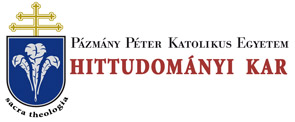Folia Theologica 1. (1990)
Péter Erdő: The Theological foundations of Canon Law according to the works of John Henry Newman
THE THEOLOGICAL FOUNDATIONS OF CANON LAW 119 Testament, calling the Church body, and Mystical Body.16 17 The Church as the Mystical Body is united by grace, through external and visible means, in a hierarchical assembly. The expression body emphasizes that the Church constitutes an organic unity. The personal and organic character of the Church makes it possible for her to have her own tasks and functions and that these functions are accomplished by a multitude of diverse organs. By this proposition Newman states that the Church has herself received, in a human measure, the triple office of Christ: that is, the prophetical, sacerdotal and regal office.18 Newman’s point of view, although it does not seem to have had a great direct influence19, was considered prophetic after the Second Vatican Council.20 Its meaning and the possibility of its full value in the present theological discussion of Canon Law is evident, given that the principle of the three offices of Christ and of the Church is expressed in the very structure of the Code of Canon Law of 1983. We shall return later to the question of the organization of the exercise of the three offices of the Church. The necessity of visibility21 arises from the sacramental and personal aspect of the unity of the Church. This unity of the Church must be socially visible, so that she may accomplish the sacramental office of an efficacious sign of the sacred reality. The very character of the visible unity of the Church in human society is explained by our author by the term kingdom, already used in Sacred Scripture and by the Fathers to indicate the Church.22 He states that, according to the Catholic Faith, 16. Ibid.; cf. e.g. also The Via Media of the Anglican Church, illustrated in Lectures, Letters and Tracts, written between 1830 and 1841 (=VM), I, Westminster, Md. 1978, xxxix-xl; Ld XIV, 403. 17. Cf. CONGAR 97. 18. VM I, xl: "He is Prophet, Priest and King; and after His pattern, and in human measure, Holly Church as a triple ofice too"; Cf. ibid, xlixliii; lxxix, etc. 19. Cf. CONGAR 98, according to whom the immediate influence of Newman’s ecclesiology was rather limited. 20. Cf. BUCHER, K.D., Newman on the fuctions of the Church, a prophetic voice for today?, in Louvain Studies 7 (1978) 15-23. 21. Cf. BOYCE, P. Die eine und sichtbare Kirche im Leben und Denken Newmans, in Christliche Innerlichkeit 24(1989) 88-98. 22. Cf. LD XIV, 404; Meditations and Devotions of the late Cardinal Newman, Westminster, Md. 1975,378 ("The Kingdom of God as Thy sacred subject. Let me never for an instant forget that Thou hast established on earth a kingdom ofThy own, that the Church is Thy work, Thy establishment, Thy instrument.")
